

Shadyside in Pittsburgh’s East End is known for its walkability, bikeability and blend of urban convenience and community charm. The largely flat neighborhood spans just 0.92 square miles, but it feels much more extensive.
“The central location and walkability cause a wraparound effect to other East End neighborhoods,” says Bill Fuller, corporate chef and CEO of big Burrito Restaurant Group, which has four restaurants in the neighborhood and its corporate office in the southern tip of nearby East Liberty.
Shadyside houses approximately 14,000 residents, 72% of whom hold a bachelor’s or graduate degree, according to U.S. Census data. The median age in the neighborhood is 33.
“The neighborhood is charming. There are beautiful houses and the combination of students, young professionals and families. It’s a good market for us, very different from the suburban areas where we were previously working,” says Juan Grimaldo, co-owner of Tocayo on Ivy Street.
Shadyside’s roots stretch back to Rachel Castleman Aiken, whose farm once occupied much of the area. It officially became a part of Pittsburgh in 1868, and the neighborhood has evolved over the years into a bustling part of town that blends historical charm with higher-density housing.
The neighborhood’s dining and drinking options are primarily along three corridors, on parts of Walnut Street, Ellsworth Avenue and Highland Avenue.
“Walnut Street used to be the most lively street in Pittsburgh. We had jazz clubs, restaurants, entertainment. There was nothing like it,” says Jimmy “Pie” Girasole, co-owner of Girasole on Copeland Street, just off of Walnut.
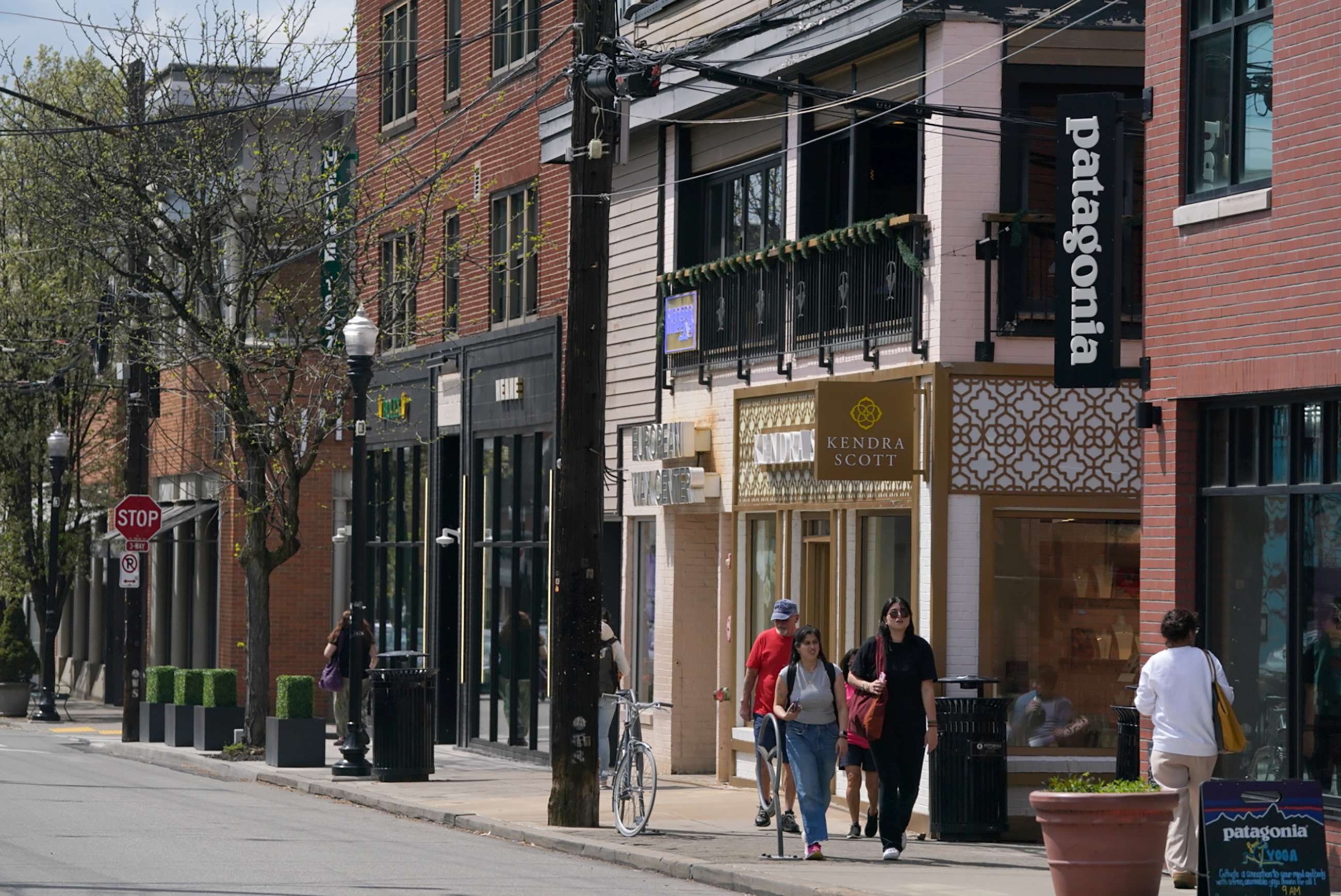
The avenue saw a shift from independently owned jazz clubs, restaurants and bars to corporate storefronts in the 2000s and became more of a corridor for post-collegiate party bars. The corridor is significantly quieter now following the COVID-19 pandemic and with fresher options to party in areas such as Central Lawrenceville.
“The nightlife is still there. But it isn’t what it used to be,” says Michael Mercurio, co-owner of Mercurio’s Gelato & Pizza on Walnut Street. “People used to be out until 2 or 3 a.m.”
Old-school haunts like Le Mardi Gras, opened in 1954, and 43-year-old Cappy’s Cafe offer a snapshot of a bygone era. (And you might bump into former Pittsburgh Mayor Bill Peduto at Cappy’s.)

Ellsworth Avenue exudes a more intimate, neighborhood-like feel.
“I see our neighbors coming in once or twice a week. It makes me happy to see how many people who are part of the neighborhood come here as the space they enjoy,” says Tu Wade, owner of Senyai Thai Kitchen. “We are very much a part of this neighborhood.”
Jamilka Borges, chef and co-owner of Lilith on Spahr Street, says residents began stopping by even while renovations were ongoing in the space that formerly housed the beloved Cafe Zinho.
“People still stop by just to say hello,” Borges says.
The smallish stretch of restaurants and bars on Highland Avenue between Centre Avenue and Alder Street is the newer buzz-worthy stretch of the neighborhood.
“Behind us and to the side of us was pretty desolate when we opened Casbah [in 1995],” Fuller says. “This whole area has experienced a rebirth.”
Additions such as budget-friendly Noodlehead, opened by Pusadee’s Garden co-owners Watcharee Tongdee and Michael Johnson in 2012, and Millie’s Homemade Ice Cream’s first storefront in 2016 have added to the mix over the years.
These 10 restaurants capture the essence of dining in Shadyside in 2024.
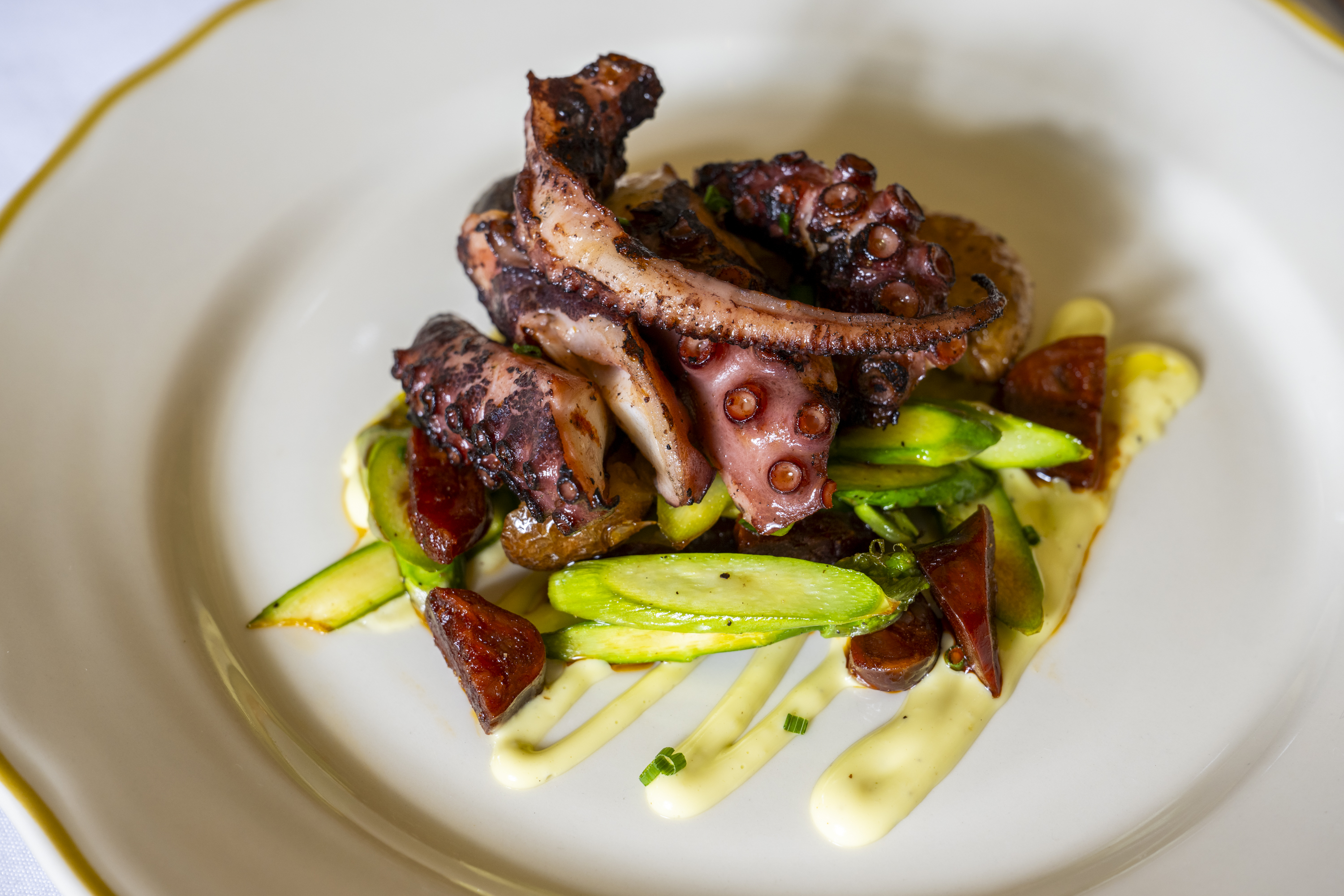
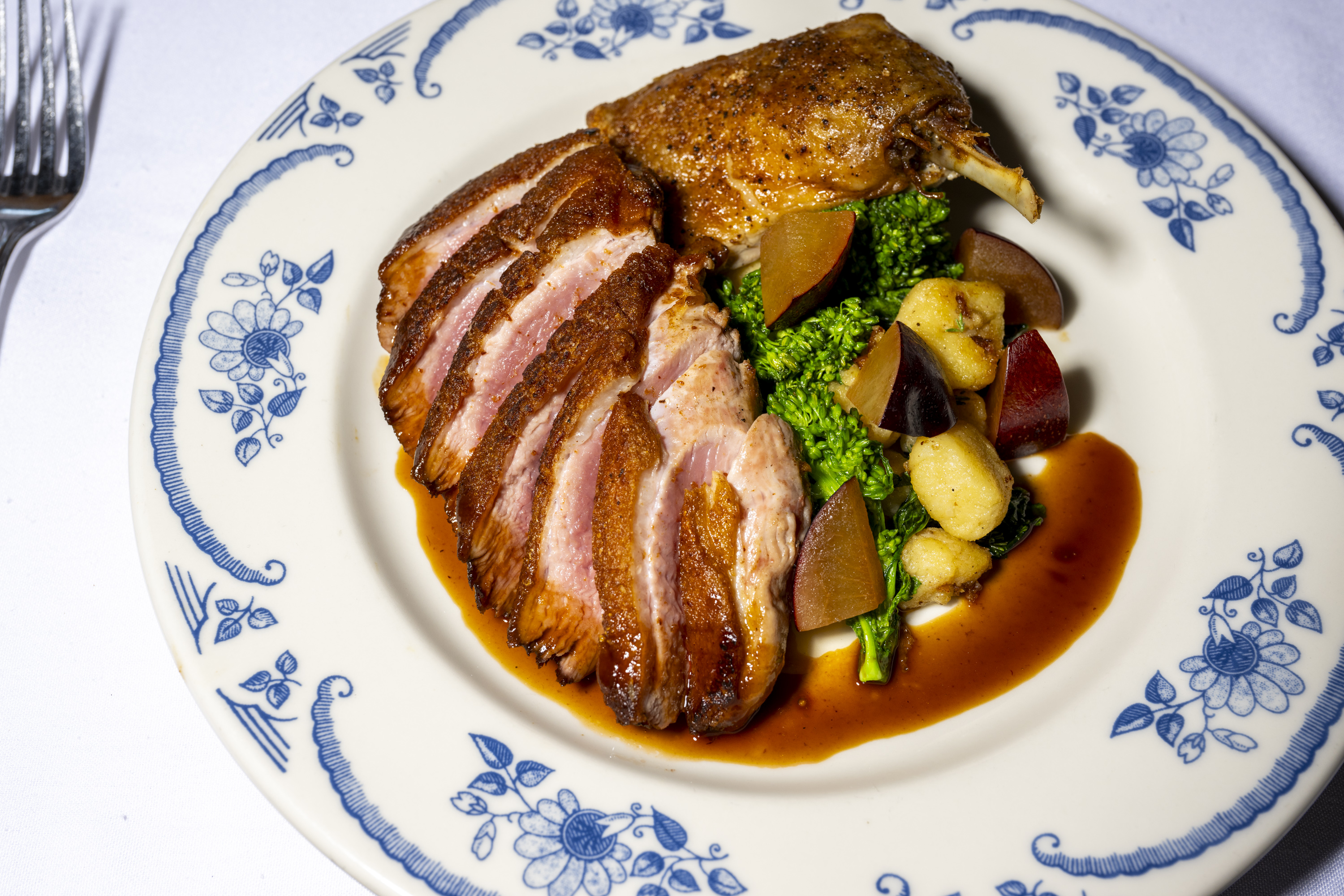



Pittsburgh’s modern dining era began in 1995 when big Burrito Restaurant Group founders Tom Baron and Juno Yoon opened their third concept, Casbah, in Shadyside.
“We brought a different energy to food and dining in Pittsburgh with Casbah,” says opening chef Bill Fuller, now the group’s president and corporate chef. “I just wanted it to feel like restaurants in Berkeley and San Francisco, but with food and atmosphere that made sense for Pittsburgh.”
Over its almost 30-year run, Casbah proved to be a graduate school for individuals working in all aspects of Pittsburgh’s hospitality industry. Fuller also helped pioneer the farm-to-table movement in Pittsburgh, supporting upstart agricultural connectors such as Penn’s Corner Farm Alliance. The restaurant continues to bolster small local farm operations, such as be.wild.er Farm.
“Casbah is a restaurant for grown-ups. It’s a place to take out-of-town guests when you want to show them Pittsburgh isn’t really behind the times,” then-PG dining critic Woodene Merriman wrote in her first review of the establishment.
All the while, it’s remained a place for grown-ups where locals and visitors still feel like they’re at an of-the-moment, if conventional, destination.
“It’s like being married for 30 years. You have to keep things fresh while not changing why you fell in love,” Fuller says.
Two years later, the company opened Soba Lounge on Ellsworth Avenue. The slick pan-Asian venue with an even edgier third-floor bar was a smash hit, drawing crowds to the Shadyside dining corridor. In 2000, that third floor became the destination sushi spot Umi, run, as it still is today, by the esteemed Mr. Shu (who has always been known by his last name). Big Burrito refurbished the rest of Soba — and added a new (slick) lounge in an adjacent building — in 2015.
In 2011, Mad Mex joined the group’s Shadyside nexus with its 10th location, adding to a group of casual, entertaining spots on Highland Avenue.
“We have a huge variety of restaurants here in Shadyside,” Fuller says. “You can eat four nights a week at different restaurants and have different experiences with us. Throw in some Millie’s and you’re good to go.”
The order(s): Casbah’s menu remains true to its 30-year-old roots: It’s a destination for dishes inspired by European Mediterranean cuisine, with a heavy lean toward Italy.
Some original items, such as arugula salad (a bold move in the 1990s), double-cut pork chop and orecchiette with grilled chicken and dried cranberries, are still around. They share space with Casbah classics including tuna tartare with shallots and celery leaf, veal and pork meatballs, and short rib ravioli with Swiss chard and oyster mushrooms.
“When guests come in and they like something, we stick with it. I always tell people to resist changing something just for the sake of changing it,” Fuller says.
That doesn’t make things entirely stagnant, however. Sets served with the entrees change several times a year, “off-menu” items (big Burrito-speak for specials) are frequently offered, and the restaurant throws several recurring themed weeks, such as tomato and corn Festa di Pasta, to keep things engaging. Casbah also has one of the better wine lists in Pittsburgh.
Soba also offers special celebrations, like “Japanese Summer,” which are a big draw. Its regular dinner list dives into a cross section of Asian culinary styles. Some of the best bites here are the large-format fish dishes: Korean-style red snapper and crispy whole branzino are among our favorites.
Upstairs at Umi, it’s best to leave things in the hands of Mr. Shu, who offers seven- and 11-course omakase (Japanese for “I’ll leave it up to you) dinners. Umi also serves a family-style meal for two people that leans more heavily on cooked dishes, such as miso-glazed black cod and rock shrimp tempura.
Casbah, 229 S. Highland Ave.; Mad Mex, 220 S. Highland Ave.; Soba, 5847 Ellsworth Ave.; Umi, 5849 Ellsworth Ave.; bigburrito.com
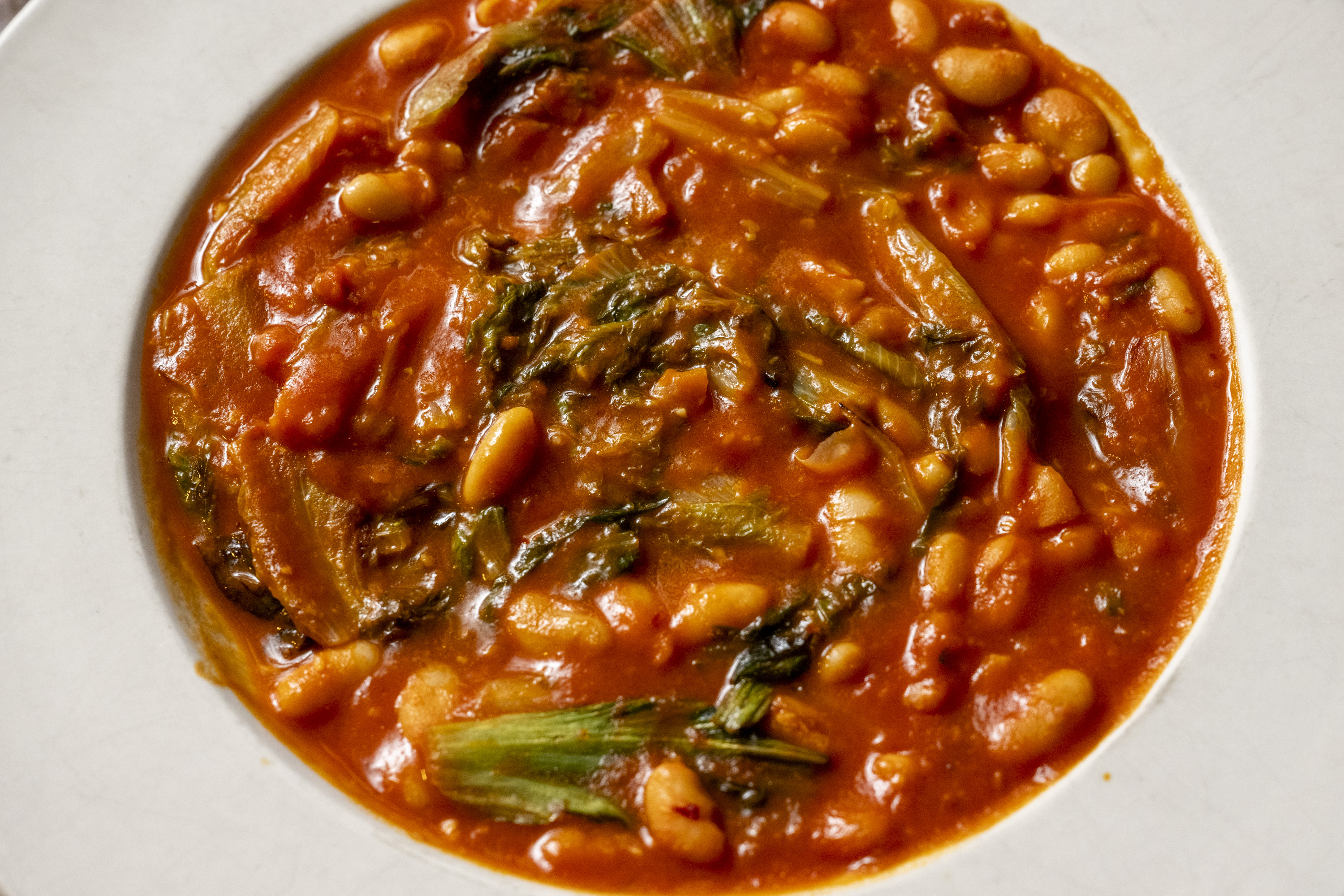
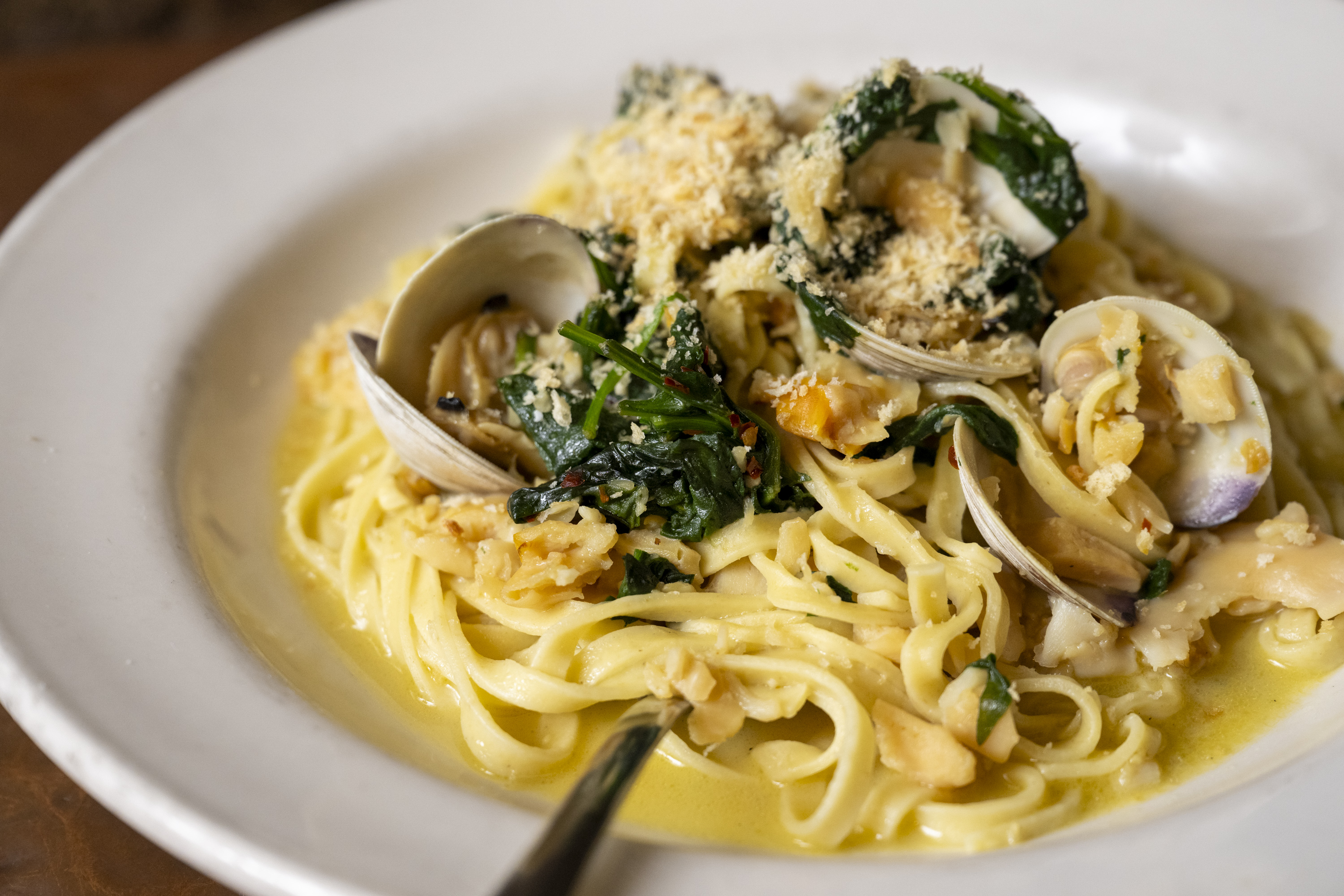
Girasole is cacophonous, cramped and spirited. That’s part of its charm. There aren’t a lot of places like this anymore.
“Is it for everybody? No. It’s loud. Very loud. I call it ‘my Italian joint,’” says co-owner Jimmy “Pie” Girasole. "The people who come here and stay, they love it. They’ll come back here forever.
While the formula at the Italian restaurant might not be suited for a serene night out, it works. Girsole’s seats are filled almost every night of the week. The resounding conviviality is what makes the stone wall-lined, subterranean restaurant essential to the neighborhood and to Pittsburgh.
(If you’re looking for a slightly more peaceful experience, go for lunch.)
Pie, as everyone calls him, is the driving force of the establishment. The spry 86-year-old is a gifted natural entertainer. As he likes to say, “I’m not very smart about anything else in life, but I’m very good with people.”
Pie, his son Gino Girasole and daughter-in-law Jennifer opened Girasole in 2000.
“I jag people and agitate them, but nobody ever gets mad at me, even if I’ve never met them before,” he says.
While Pie might be the main allure, it’s the team around him that keeps Girasole thriving nearly 25 years into its run. His wife, Patti, is the glue that holds it together and a personality in her own right.
Jennifer Girasole crafted the menus throughout the years.
“I told him I wasn’t interested in doing this if Jennifer wasn’t coming to cook. She was the heart and soul of this restaurant,” he says. “Everything we eat here is hers.”
She left the kitchen to pursue opportunities outside the restaurant world a couple of years ago, and now 18-year Girasole daytime chef Chris Corimski runs the kitchen, placing orders, preparing soups and sauces and generally keeping the kitchen running up to specs.
Guitarist and singer Jamie Wright adds to the pizzazz Tuesday, Wednesday and Thursday nights. You’ll likely hear Pie make some wisecracks, and you’ll probably sing along to some of the old-school Italian and crooner-era tunes.
“I don't want to be nowhere else. I really don’t. I’m a people person, through and through,” Girasole says.
The order: The concise southern Italian menu is a mix of enduring dishes, seasonal rotations and daily specials such as a spicy mussels in arrabbiata sauce served in August.
The number one dish at Girasole is greens and beans, which are made the old-school way with escarole. A few dashes of house-made marinara sauce help it stand out from the pack in Pittsburgh with a bit of acidity and sweetness. You can add sausage, too, if you’re looking to boost the starter into a meal.
It was the only dish that Pie insisted they serve at Girasole.
“A few days before we opened, my son said they decided they wouldn’t put it on the menu. I said if you don’t put it on the menu, I’m out,” he says. “It’s our biggest seller to this day.”
Seasonal items are recurring and change four times a year. Summer pasta means spinach spaghetti with tomatoes, corn and fresh mozzarella. Come autumn, Girasole’s ever-popular pumpkin ravioli with a sage cream sauce will replace it on the menu.
Regulars, and there are many, appreciate the consistency of the everyday items. Of those, potato gnocchi with marinara and fresh mozzarella, grilled filet with roasted potatoes and ratatouille, and penne with meatballs are highlights.
733 Copeland St.; girasolepgh.com



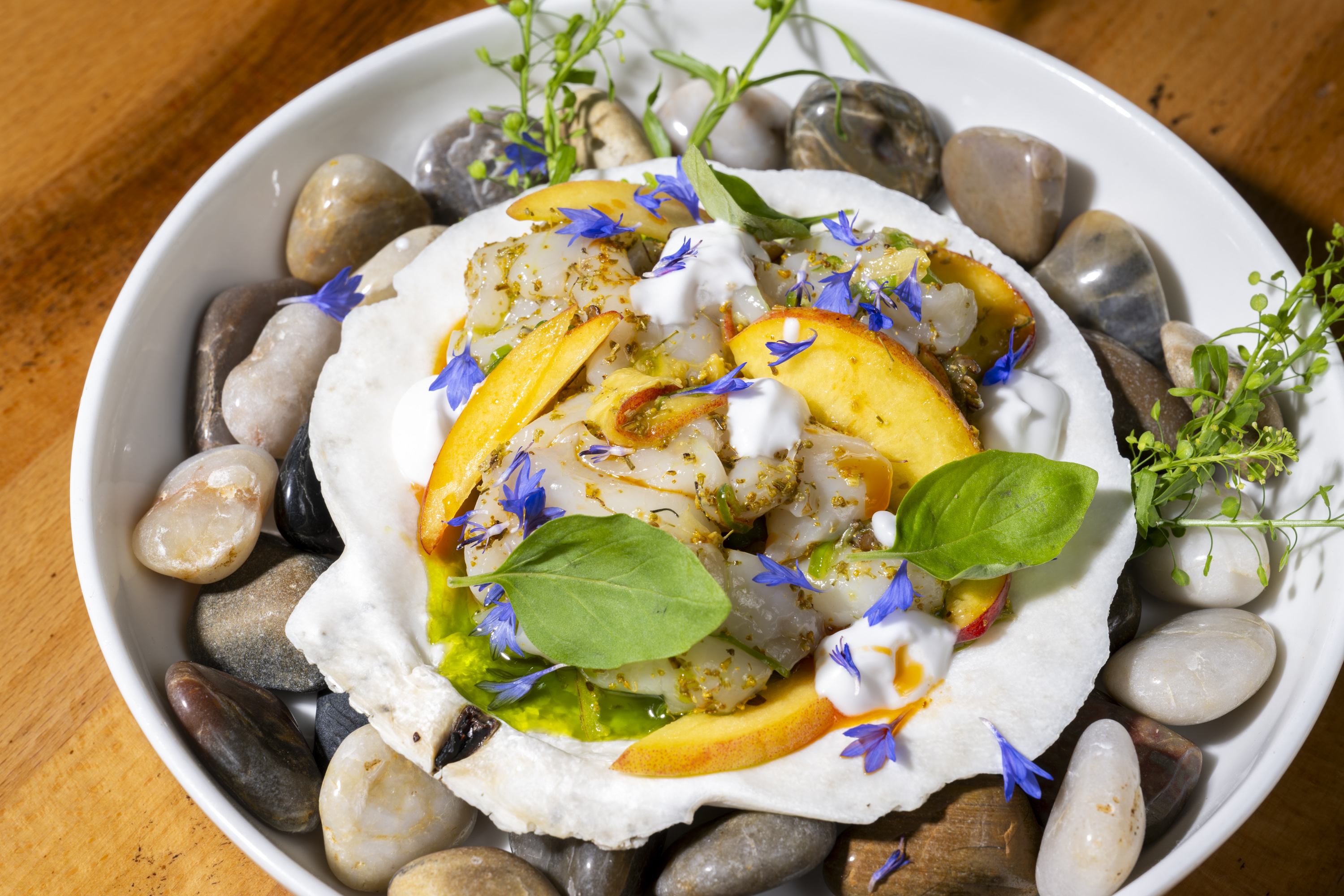

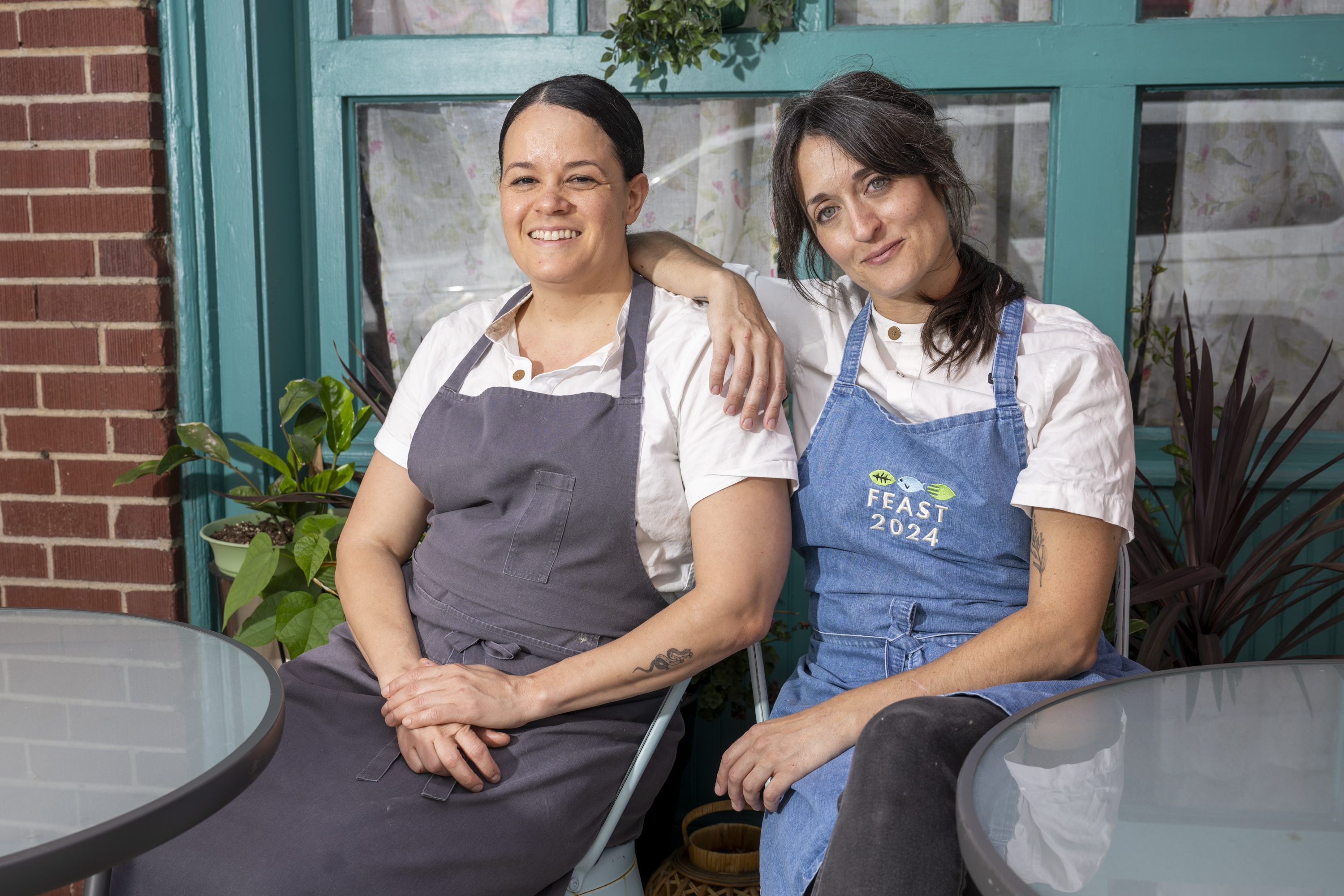


Dianne DeStefano and Jamilka Borges are longtime friends and colleagues who have both made a considerable culinary impact in Pittsburgh over the last decade-plus of their careers. After working (sometimes together) for other operators, the two established their first restaurant, Lilith, in November.
The intimate, 35-seat spot is less than a year old but already feels like a well-tested neighborhood spot. It’s personal. Vibrant. Lilith offers a reason to dine out that goes far beyond “feed me, I’m hungry.”
“There’s a magic to this space. It’s cozy and homey,” DeStefano says.
While you can still feel the liveliness stored in the walls of the building from its 26 years as Toni and Becky Pais’ Cafe Zinho, it’s now distinctly Borges’ and DeStefano’s party.
You see the partnership between the two in cohesive through lines throughout the experience: a texture-rich menu of tropical flavors meshed with Pittsburgh farm culture, service that leans hospitality forward in a way that feels joyful rather than status-based and the dining room’s colorful art, enchanting flatware and festoons of fresh flowers gracing the tables.
“It’s plain and simple. Dianne and I are finally doing our own thing. We’re not responding to anybody but each other, and we work really well together,” Borges says. “We want to do the best for our customers rather than trying to ‘prove ourselves’ and be cool. There’s a level of maturity about who we are as cooks and chefs that translates to the restaurant.”
The order: Lilith is one of the most seriously seasonal restaurants in Pittsburgh, so what you order will likely change every time you visit. Nevertheless, several menu items are recurring — some, like the utterly gorgeous scallop ceviche, are presented as variations on a theme — and you’ll likely end up bookmarking them as favorites.
Another is the vibrant tuna tartare, an attractive starter featuring hand-cut tuna and shallots, topped with a delicate crown of finely minced green scallions and chives. It offers a fresh, meaty bite backed by a chorus of allium. The tartare is served with DeStefano’s toasted, slightly sweet pan sobao, a signature Puerto Rican bread that manages to be soft and crisp at the same time.
Seafood tends to play a starring role at Lilith, especially during the summer. A standout in July was light, bright and tangy loup de mer, which a friend declared “the perfect dish for a hot summer night.” Borges dressed a crisp and juicy filet of European sea bass with kohlrabi purée, tomato confit, lemon, pink peppercorn, charred shishitos and passion fruit vinaigrette.
But as the seasons change, so too will the offerings. “Look for comforting, stick-to-your rib dishes once it gets cold,” Borges notes, adding that Footprints Farm duck and pork will appear on a heartier late autumn menu.
DeStefano’s strengths as a baker are evident throughout the meal, particularly with a complimentary bread service served with salt-topped, room-temperature, high-quality butter and olive oil.
You’ll also want to stick around for her desserts.
Her passion fruit cheesecake was an unquestionable star, with enough sourness in the cheesecake and savory from sesame brittle to balance the sweet-tart passion fruit and cute meringue pieces. DeStefano is as skilled with texture as Borges.
You don’t see baked Alaska, a late 19th-century treat that peaked as a fad in the 1950s, on menus, but DeStefano says it’ll be a standard on the menu.
“I’m embracing it. It’s going to be delicious,” DeStefano says.
238 Spahr St., lilithpgh.com
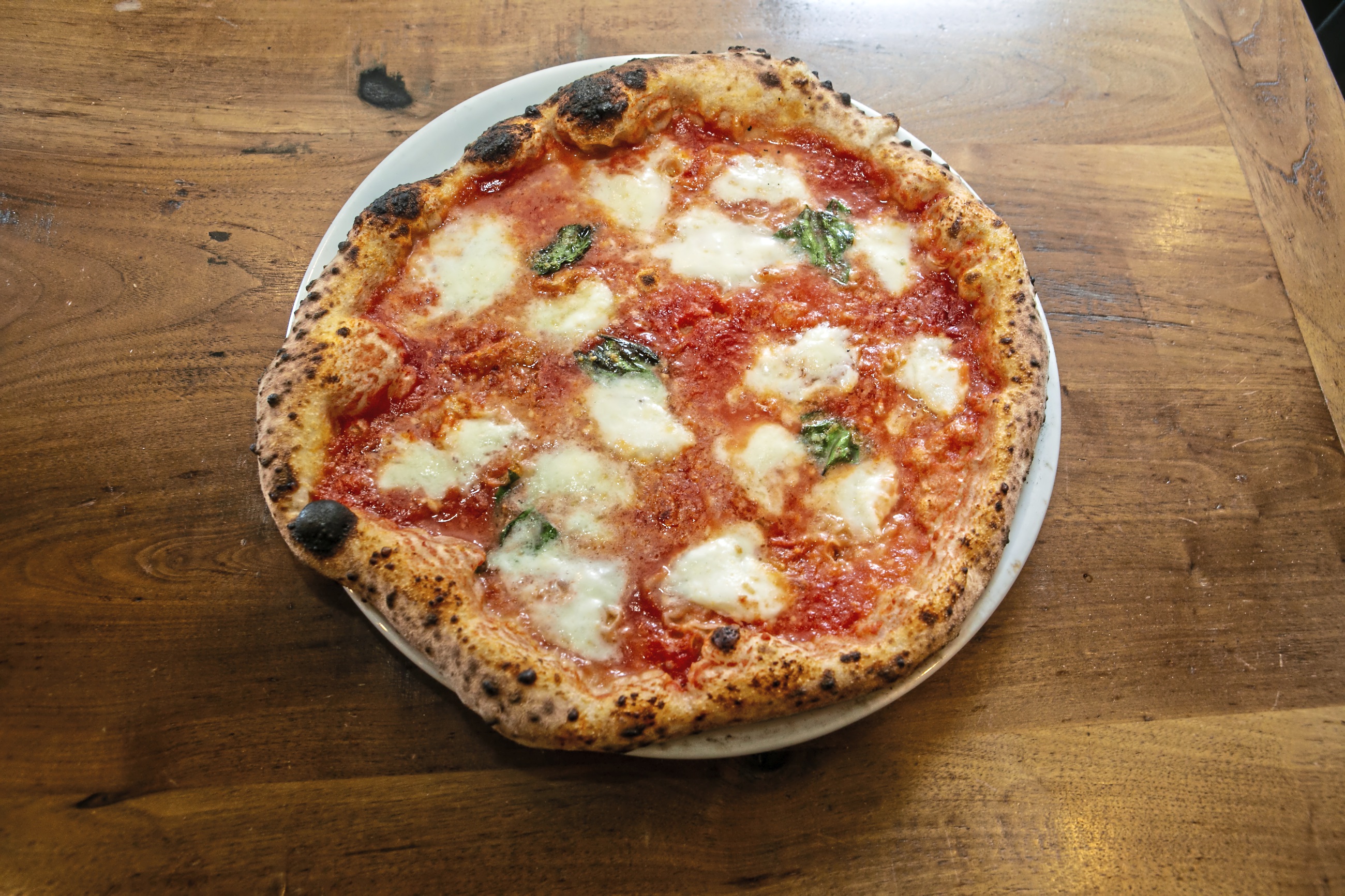

Linda and Rick Mercurio opened Mercurio’s as a gelateria in Shadyside above Girasole in 2005, after previously operating Mulberry Street Creamery in Kittanning in 1999. In 2011, they moved to their current Walnut Street location. Two of their children, Anna Crucitt and Michael Mercurio, added a pizza component in 2012.
“When we opened here we were the gelateria that had pizza. Now it’s the pizzeria that has gelato,” says Crucitt.
Their brother Joe Mercurio joined as a partner in 2013, and the three siblings took over the entire operation in 2016. The family opened a second location in O’Hara in 2019.
“I feel like we’re a vital part of the street now. Big companies come and go, and here we are this small family business that’s holding our own and thriving,” Michael Mercurio says.
Michael understudied the craft with famed pizzaiolo Roberto Caporuscio, who prepared Neapolitan pies in Pittsburgh from 1999 until 2006. In 2019, Michael and Joe deepened their training with a master class from Associazione Pizzaiuoli Napoletani. Much of the ongoing learning is from experimenting in-house, playing with fermentation methods, water temperature and timing.
All three siblings are active in the wider pizza world, participating with the World Pizza Champions (an international team of pizza makers who compete, educate and participate in community events) and attending the annual Pizza Expo in Las Vegas. They learn, they test and they work to get better together.
“We’re mindful about the experience we want to give customers in Shadyside. We want this to be a consistently excellent experience,” says Crucitt.
The order: Pizza. What Mercurio’s does is among the very best in Pittsburgh.
Mercurio’s pies largely adhere to the spirit of the Neapolitan tradition, offering pizza cooked at lightning speed in a white-hot oven.
It’s totally OK to eat this style of pizza with a knife and fork, and that’s just how you should approach the bites at the saucy center of the ultra-thin crust. When you get to the airy, lightly charred crust, run it through the gooey leftover drippings.
Mercurio’s keeps the toppings uncomplicated: These are pies that showcase balance, quality and technique.
“It’s beautiful because of the quality of ingredients that we use and the attention to detail we put into the process,” Crucitt says.
The well-fermented dough bakes in 90 seconds to a puffy, chewy rind, a center with a soft tug, a deeply leopard-spotted undercarriage and a whisper of fermented tang.
Make it a point to get a Margherita on your first visit (and every subsequent one): Topped with piquant hand-crushed tomatoes, creamy house-pulled mozzarella and fragrant basil, Mercurio’s craftwork is transportive.
Then, delve into the rest of the pizza menu. Both red (rossa) and white (bianche) spins are thoughtfully balanced, with high-quality ingredients given space to shine and bolster each other.
A newer addition to the lineup, pistachio and mortadella, showcases the family’s well-honed technical prowess with a gorgeously balanced build of earthy, buttery and nutty flavors set off with a hint of sweetness.
Don’t skip out on the gelato. After all, Mercurio’s started as a gelateria, and they’ve stayed true to those roots.
The case at the Shadyside location is a rainbow-hued dream with 30 varieties of brightly colored options.
Each flavor is made with the same attention to detail that defines its pizza, using traditional Italian methods and top-quality ingredients. Old-school flavors like stracciatella and pistachio share the spotlight with contemporary offerings such as Colombian passion fruit and s’mores. Mercurio’s creamy hazelnut, with its rich, nutty depth, is a standout flavor that embodies Mercurio’s craftsmanship.
“We offer something sweet and savory, and it usually just takes a few minutes from start to finish for whatever you want,” says Michael Mercurio.
5523 Walnut St., mercuriosgelatopizza.com


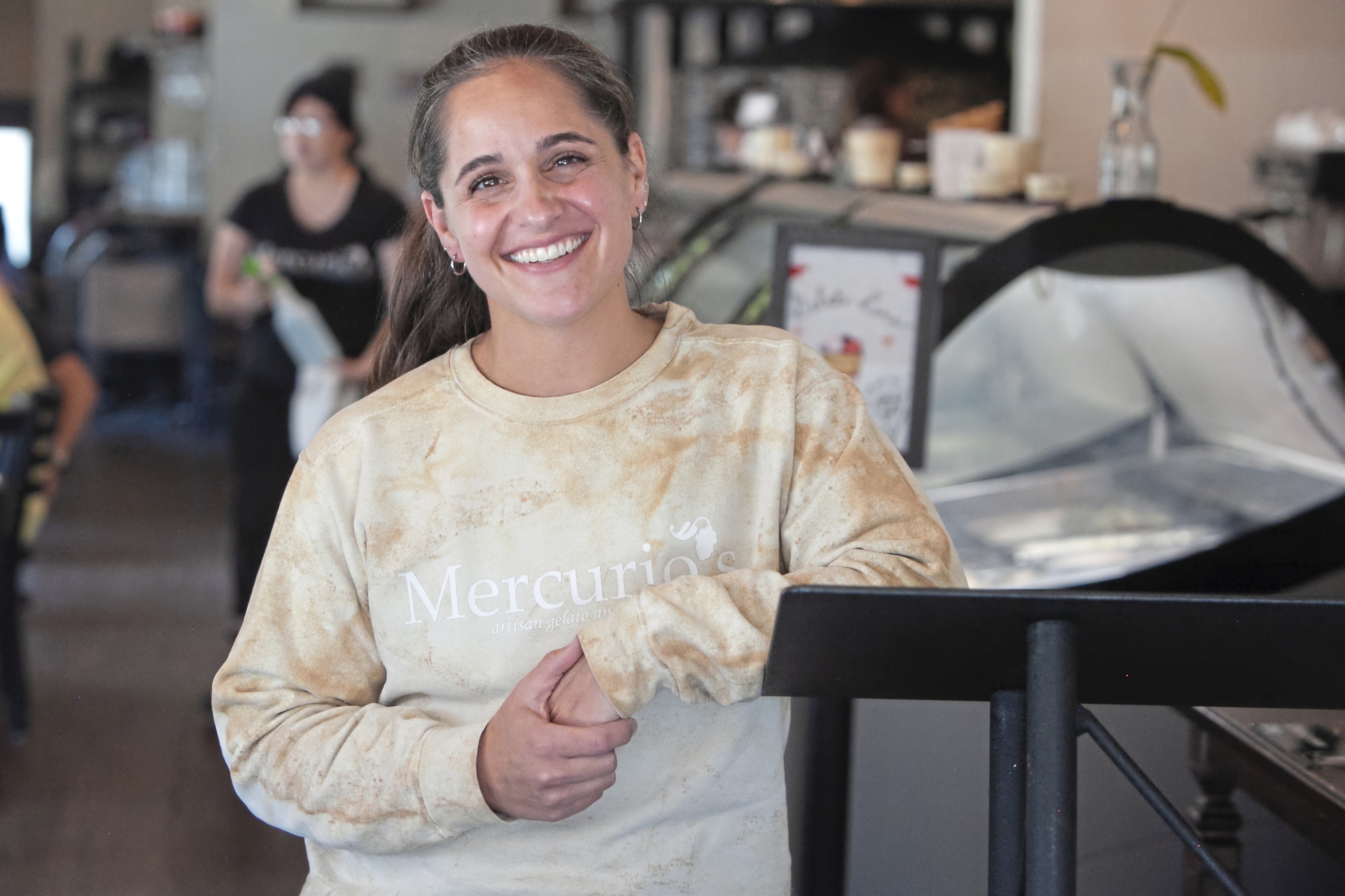

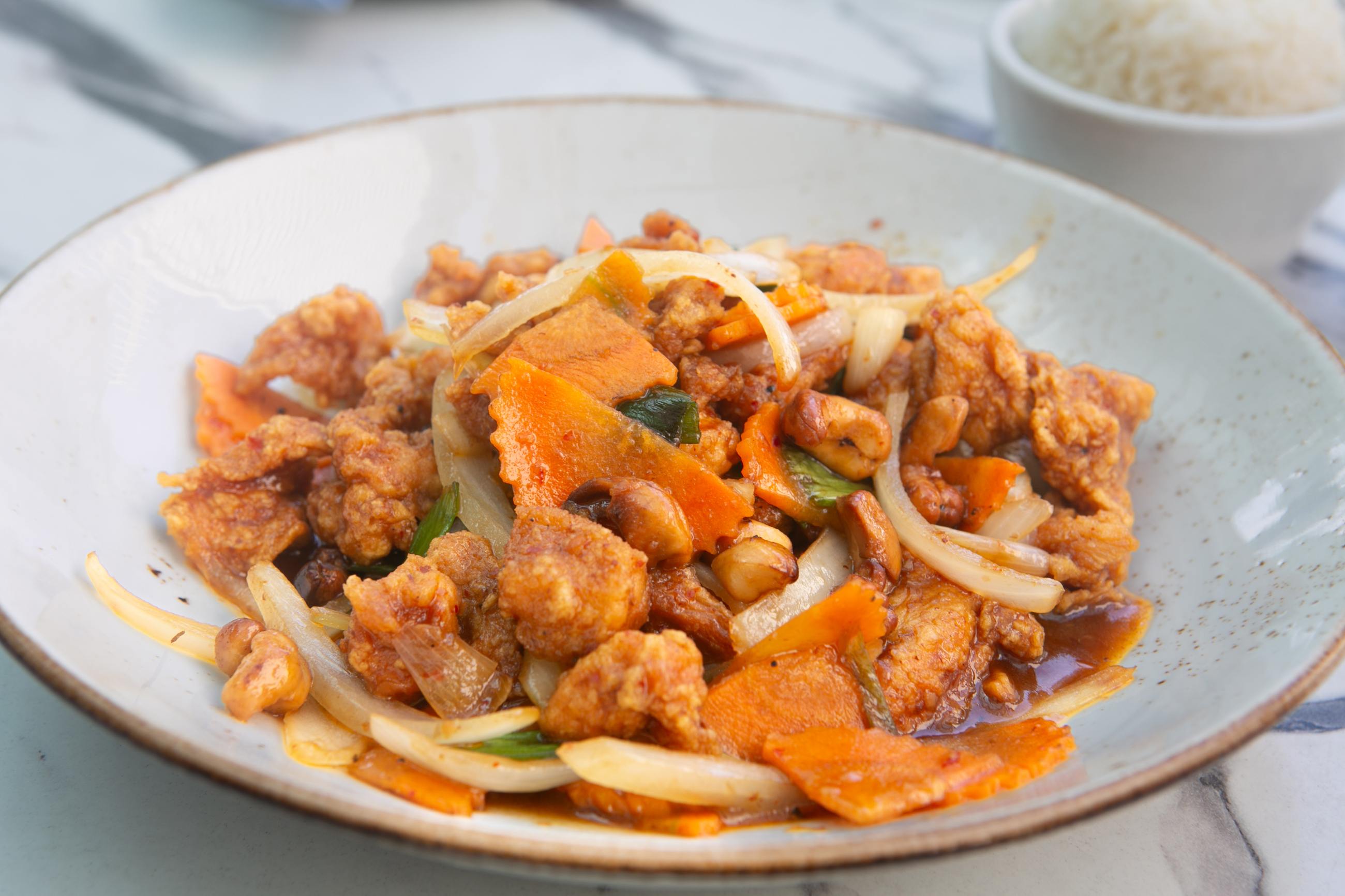
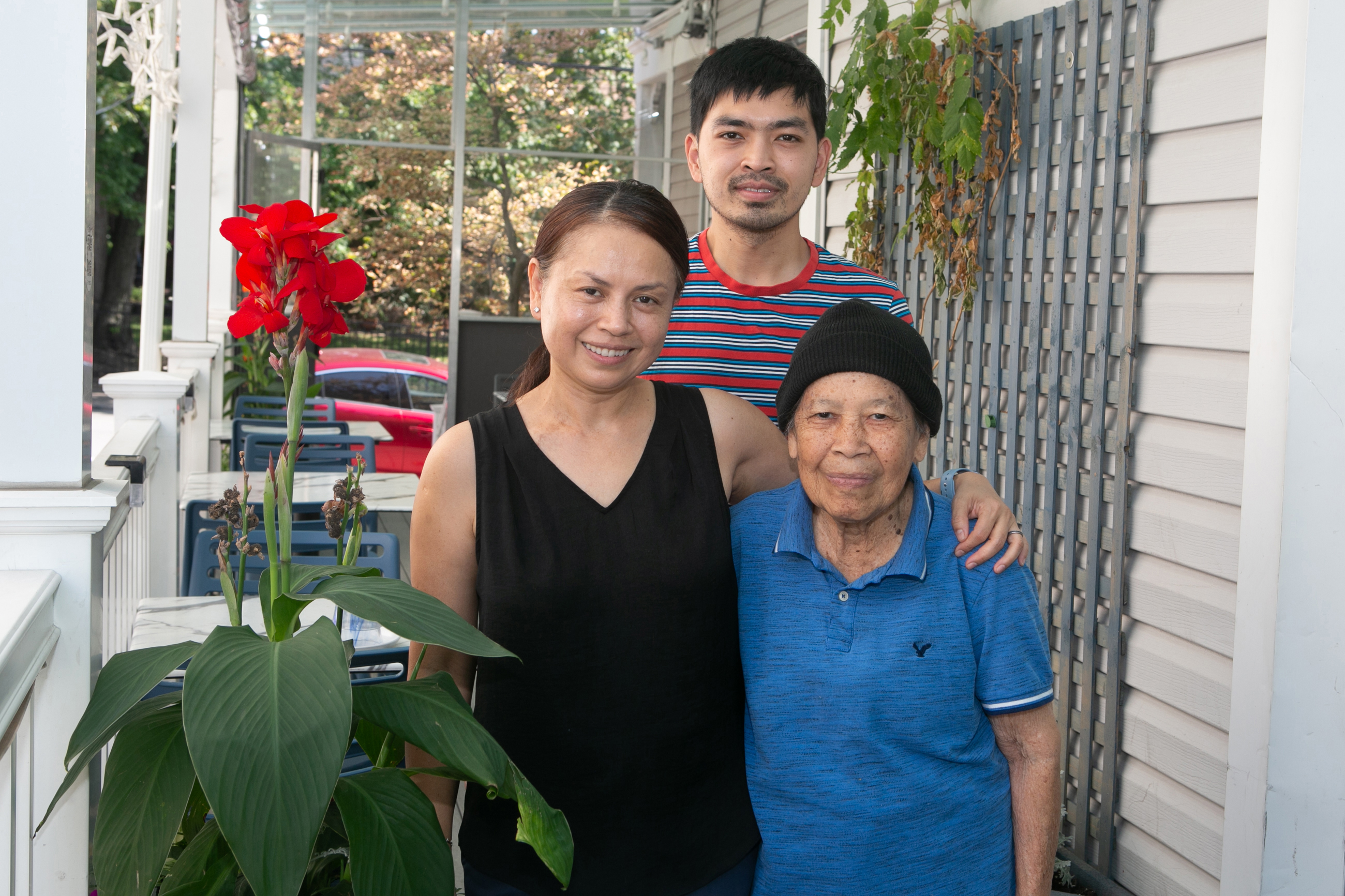


Eighteen years ago, Tu Wade left Thailand for Pittsburgh with her husband, who grew up here, beginning a new chapter that led her from attending beauty school to opening a salon on Walnut Street.
In 2016, Wade purchased a building on Ellsworth Avenue and relocated her salon to its second floor. The ground floor, once home to a Mexican spot, sparked another idea: Why not bring her lifelong love of cooking and entertaining to a public audience?
“When I moved here, I often cooked for friends. This space felt like the perfect opportunity to share the flavors of my country,” Wade says.
She faced a significant challenge: “I had no idea how to run a restaurant. That side of the business was completely new to me.”
Undeterred, Wade drew on her business background and sought out culinary classes during her annual trips to Thailand. With her mother and a friend from home who had also settled in Pittsburgh, she began crafting the recipes that would comprise the touchstone of Senyai. Today, it’s a deeper family eatery; her son is now part of the business too.
“When you go to Thai restaurants, you often see the exact same menu. I wanted a smaller menu in a beautiful space,” Wade says.
She worked with a client at her upstairs salon to refurbish the space, crafting a gorgeously comfortable interior with an arched, whalebone-like ceiling and tables adorned with fresh flowers.
Each year, Wade commits to one major architectural upgrade. The latest? An all-season patio that feels like a friend’s porch — comfortable, intimate and weatherproofed for year-round dining.
Senyai is a restaurant intentionally crafted to offer a beautiful dining experience, but something that’s repeatable weekly if that’s what you’re into. It’s nestled perfectly between the casual ambiance of many Pittsburgh Thai spots and the more upscale elegance of Pusadee's Garden in Upper Lawrenceville.
To that end, it can get crowded at Senyai, especially on weekends, so reservations are recommended.
The order: Go in for the range of regional dishes and look for a balance of heat, savory, sour and sweet.
Pad med mamuang is a sweet-savory stir-fry that will appeal to a broad cross section of diners. It’s brimming with crackling fried chicken, roasted cashews, onions and carrots, perfect for those looking to expand their Thai food horizons without venturing too far from the familiar. The chicken’s crispiness is complemented by a subtly sweet sauce with a touch of chili heat, and the wok hei (concentrated flavors and aromas from cooking in a wok) from the cashews adds a delightful depth. Plus, it makes for fantastic leftovers.
Another standout is hung lay, a deeply savory northern Thai pork curry. Chunks of unctuous pork are fork tender, and the hint of fish sauce adds umami to the curry. It’s a fantastic dish over the kitchen’s gorgeously cooked rice, with individual grains and a slightly chewy texture.
Duck curry with pineapple delivers a punch of pungent-sour flavors while maintaining a delicate balance. The roasted duck is meltingly tender, offering a deeper savoriness, while rich red curry sauce envelops each bite.
For fussy eaters and those newer to Thai cuisine, familiar, comfortable favorites like pad see ew and fried rice are also available. Additionally, the BYOB establishment accommodates various dietary preferences with a generous selection of vegetarian, vegan and gluten-free dishes.
“You can try new food and get something familiar at the same time,” Wade says.
They change the menu every year or so with a smattering of new dishes; those less popular are quietly retired.
And family advice remains close at hand.
“My mom works here every day,” Wade says. “She lives on the third floor now.”
5865 Ellsworth Ave., senyaipgh.com
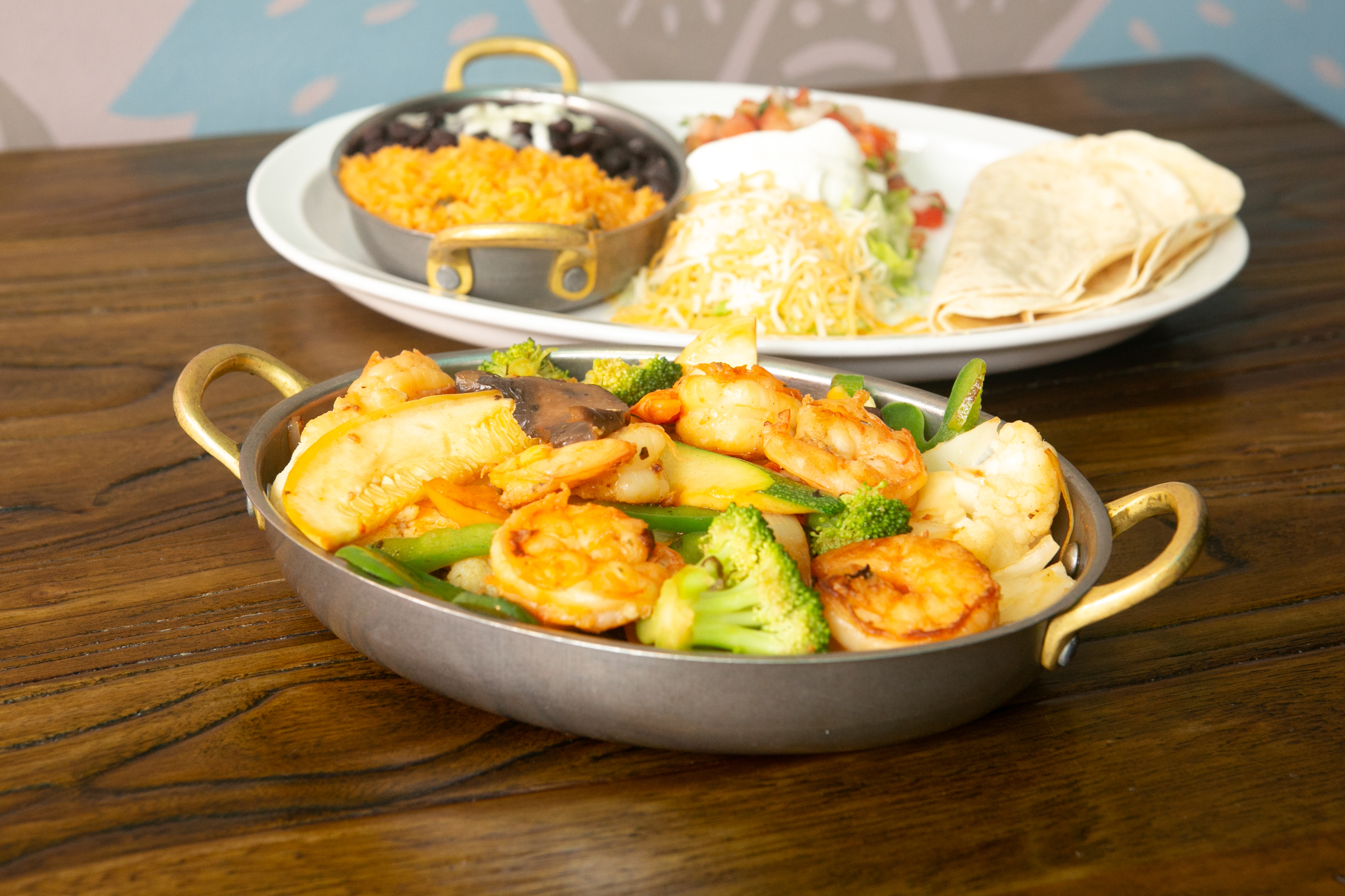
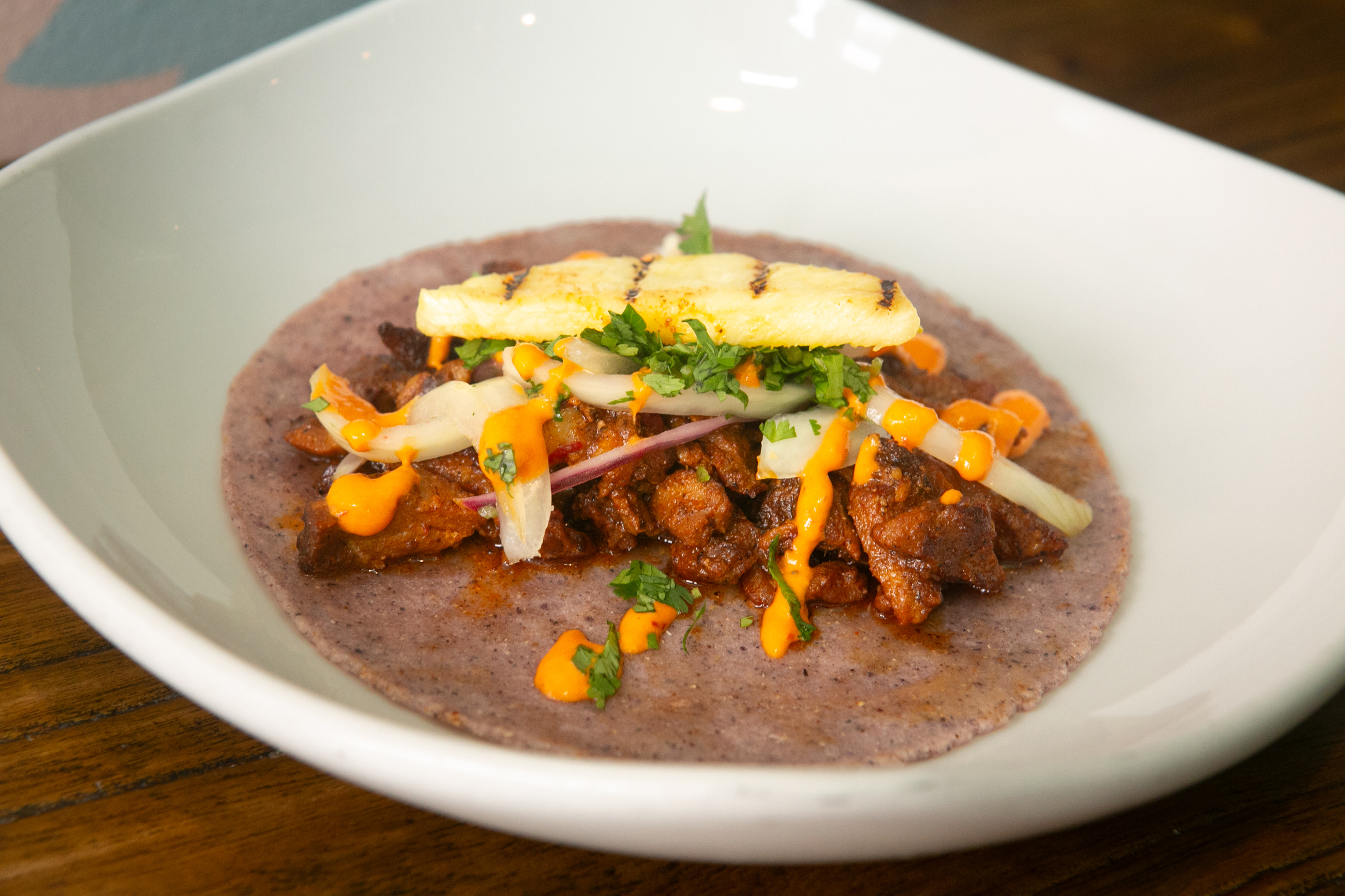
Juan and Danielle Grimaldo were drawn to Shadyside’s charming walkability and its mix of students, young professionals and families when they decided to open a second restaurant in 2019.
They’d previously launched Totopo Cocina & Cantina, a family-friendly Mexican influenced restaurant in Mt. Lebanon in 2016 and a food truck in 2018. This one, they thought, could more directly appeal to Juan’s roots in León, in Central Mexico, and his long experience in restaurants.
He came to Pittsburgh when he was 15, started washing dishes in Chinese restaurants and moved up in the industry. After he became a server in a Chinese restaurant and some of his regulars asked what he was doing there, he started working in Mexican restaurants.
“My wife thinks it’s boring to do the same thing over and over. The challenge is to make it different,” Grimaldo says. “Everything still gravitates to our roots in Mexican food.”
It’s a nice mix of cantina vibe with food made with respect for traditional Mexican cooking. It’s not a rowdy bar, but definitely a place where you can have some fun.
Look for the couple, now operating as Más Taco restaurant group, to open a street food-inspired cantina, Camino Mexican Street Food, in the former Del’s space in Bloomfield as early as spring 2025.
The order: Start with crunchy, easy-to-love taquitos, especially if you’re dining with a group. Tocayo’s made-to-order guacamole, which gets a good zip from fresh jalapeños, is another solid sharable.
Tacos come two to an order, which you can mix and match. What I like about the selection of 11 options is that each is garnished with a specific set of ingredients that complement the primary star of the taco.
“We’re doing it our way. You probably wouldn’t find these in Mexico as we serve them, but you’ll see the influence there,” Grimaldo says. “We wanted to make a new interpretation of what tacos could be in Pittsburgh.”
Earthy beet tacos, served on blue corn tortillas, are bolstered with a zesty combination of citrus, chile ancho, queso fresco and marigold petals. Lush and crispy carnitas come on a flour tortilla with guacamole, onions, pickled jalapeños and crunchy tortilla crumbles. Crisp, battered cod and savory-sweet al pastor are among my other favorites.
Hit the quesabirria — broth-dipped and griddled corn tortillas dripping with braised beef and cheese — if you're looking for something extra indulgent.
Or, go for a chimichanga. Tocayo’s nod to the fried Tex-Mex classic is a festive belly stuffer. Fajitas, a once-trendy Tex-Mex staple that’s become increasingly hard-to-find in Pittsburgh restaurants, offer a solid option that adds a bit of sizzle to your meal.
Perhaps indulge in a selection or two from the cantina’s well-made margarita, mojito and classic cocktail menus.
810 Ivy St., tocayopgh.com



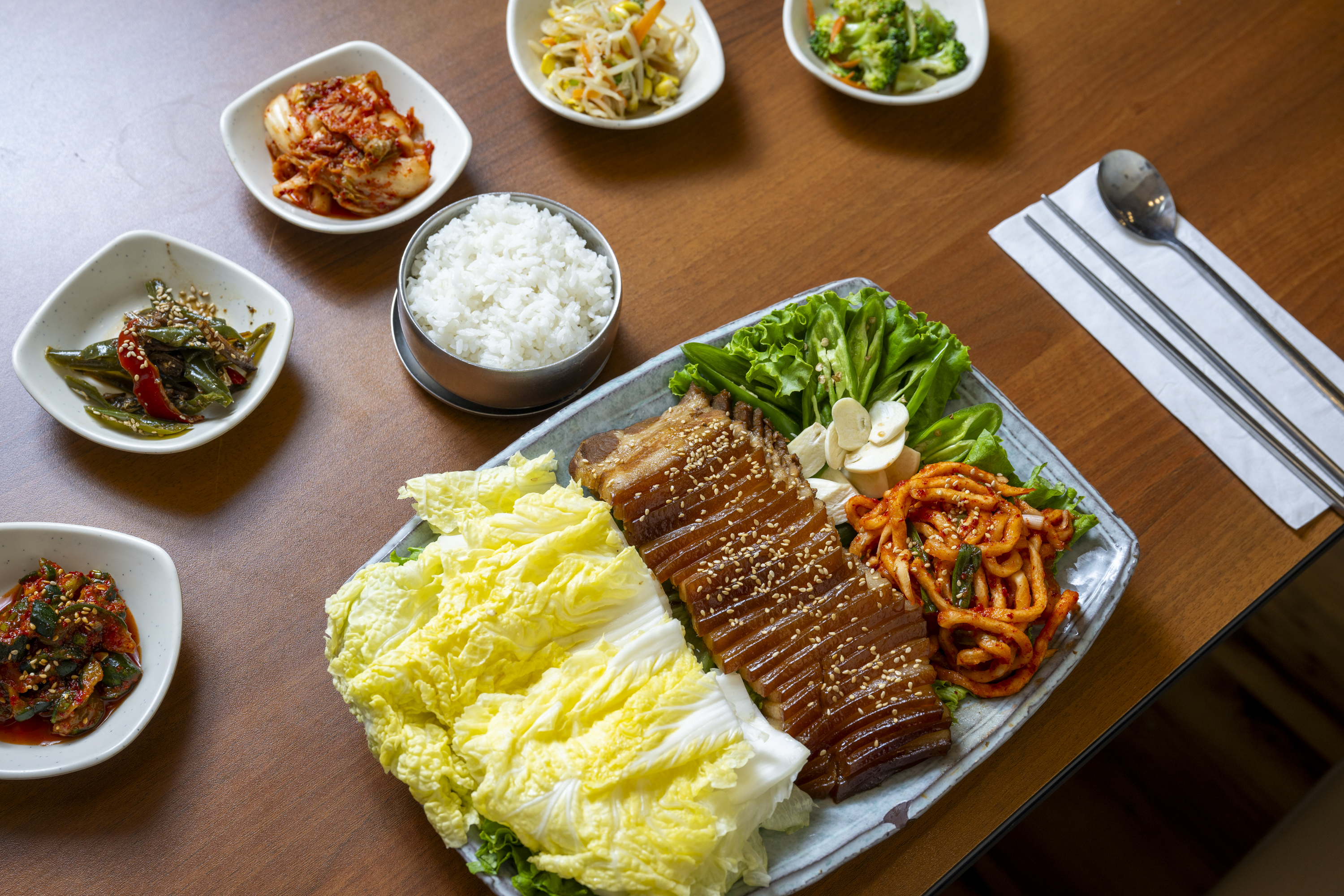
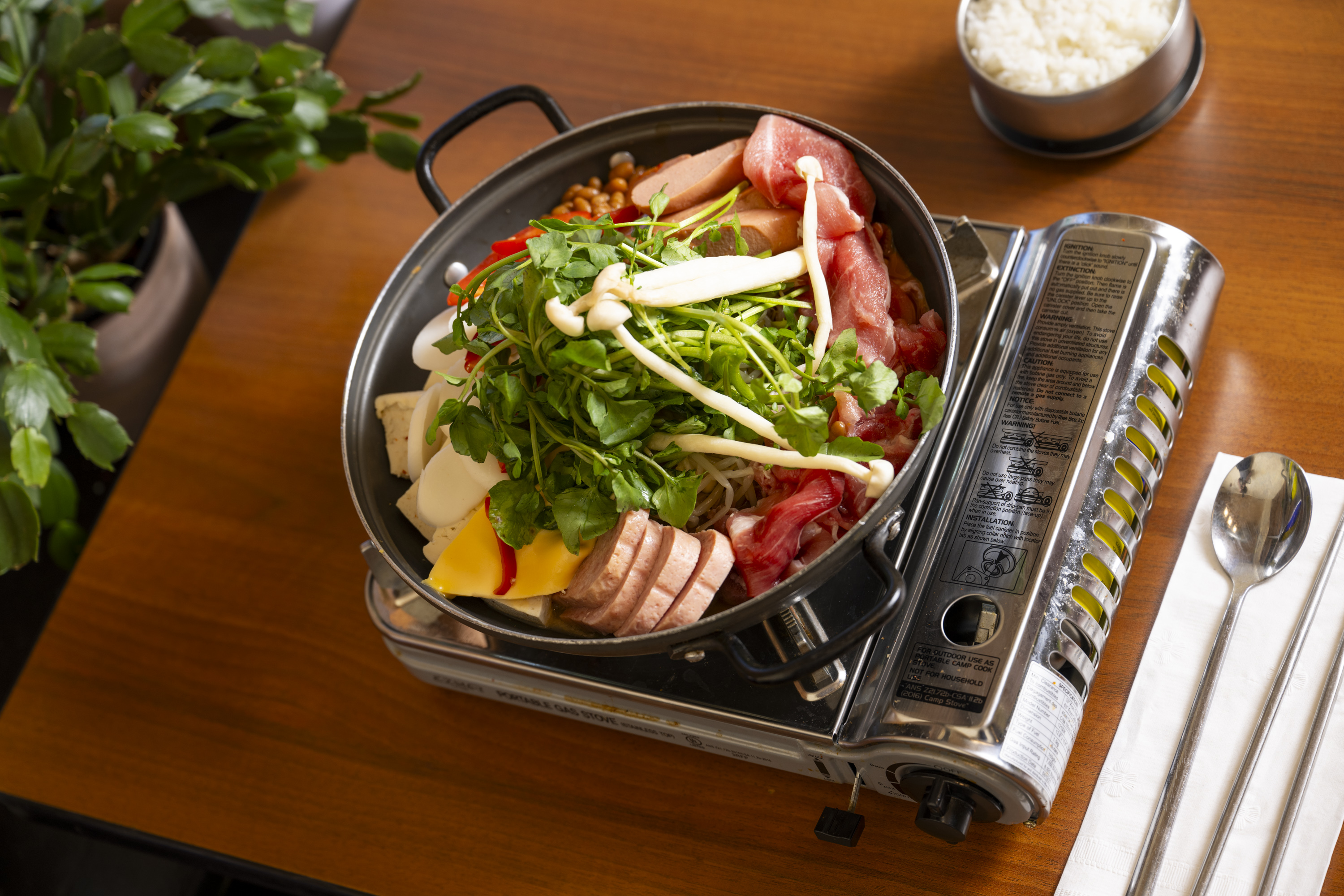
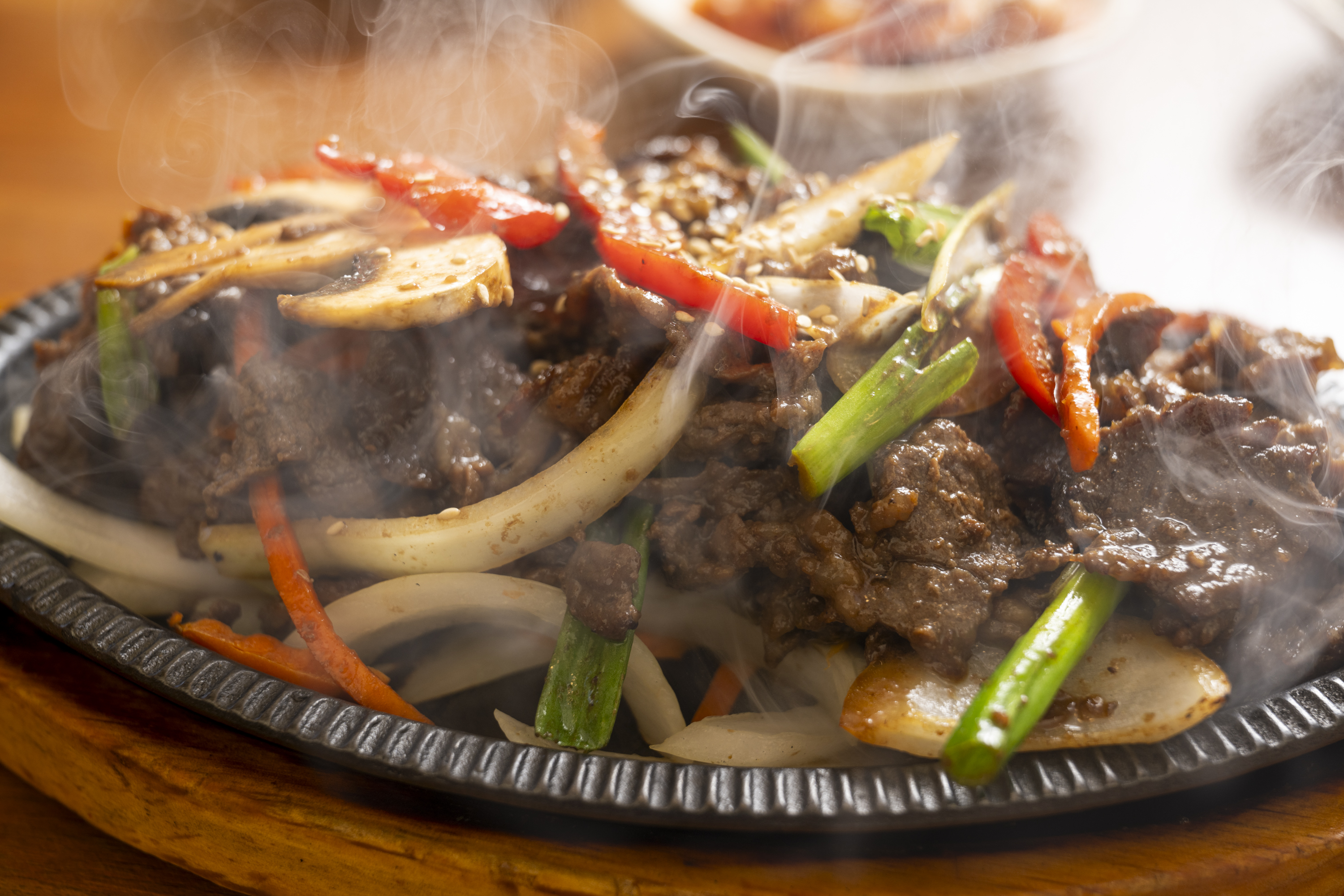


Yang-Suk Beondy’s restaurant on Centre Avenue is an extension of her long-standing devotion to sharing the cuisine of her home country.
Beondy arrived in the United States in the mid-1980s, settling in Westmoreland County with her now-husband. The two met when he was visiting a sister who was stationed with the U.S. military in Seoul, South Korea.
“There’s always been something about how she provides Korean food for the community, especially when there wasn’t much access to it. She opened Seoul Mart in Oakland so that people can get ingredients and always cooked for the Korean church bazaars,” says her daughter, Nak Won Garden co-owner Christina Beondy.
The family opened Nak Won Garden nearly 10 years ago as a way to deliver a fulsome expression of Korean food in a city that didn’t (and still doesn’t) have a lot of restaurants representing the East Asian nation.
Yang-Suk Beondy is from the far southern end of the Korean penninsula. “The cuisine there is a little spicier and fishier than what you might find at other Korean restaurants,” says Christina Beondy.
Christina Beondy notes that the eatery, with a long row of tables on one side of the relatively narrow rectangular space and a semi-open kitchen on the other, is meant to evoke a homestyle feel.
The order: You can go a couple of different routes at Nak Won Garden — share a big, banquet-style meal or have a quick individual dining experience.
Whichever route you choose, start with a couple of shared dishes for the table. Nak Won Garden’s mandu, filled with a savory blend of beef, pork and vegetables, are aromatic and satisfying; I prefer them steamed, though the crisp pan-fried version is pretty terrific, too. Luscious “Korean spicy” chicken wings offer a launchpad for a heat that builds throughout the meal — extra napkins are a good idea. Ddukbokki brings the chewy delight of rice cakes in a rich gochujang sauce with gooey melted cheese.
“It’s a great place for family style. Korean food is about sharing and community. We’re perfect for big groups,” says Christina Beondy.
If you come with a group, assemble a meal of the larger items listed on the hot pot and anju sections of the menu.
Budae-jjigae, aka army base stew, is a must-get. Born out of food scarcity following the Korean War, the hearty stew is now a beloved national dish. At Nak Won Garden chunks of tofu, oval-sliced pieces of hot dog, wedges of spam and tender slices of beef bob in a cauldron of heady broth with an intoxicating mix of ramen noodles, fermented beans, tteok (chewy rice cakes), crunchy bean sprouts, pickled zucchini, sliced onions, carrots and a bouquet of bitter greens.
Other gems that might perk your group’s attention are soondae (homemade blood sausage, a rare find in Pittsburgh), bossam (a festive platter of food to wrap in lettuce centered around steamed pork belly) and jeyuk bokkeum (a spicy pork shoulder stir fry).
For those going solo, kimchi-jjigae is a strong option. This comforting homestyle dish arrives bubbling in a clay pot, filled with silken tofu, rice cakes and tangy kimchi. The classic bibimbap, served sizzling at the table, invites you to mix it up before digging in — and if you’re feeling generous, share some of the crispy rice clinging to the edges with your friends.
5504 Centre Ave., tinyurl.com/nakwongarden
Hal B. Klein
Benjamin B. Braun
John Colombo
Ed Yozwick
Laura Malt Schneiderman
Advertisement
Advertisement